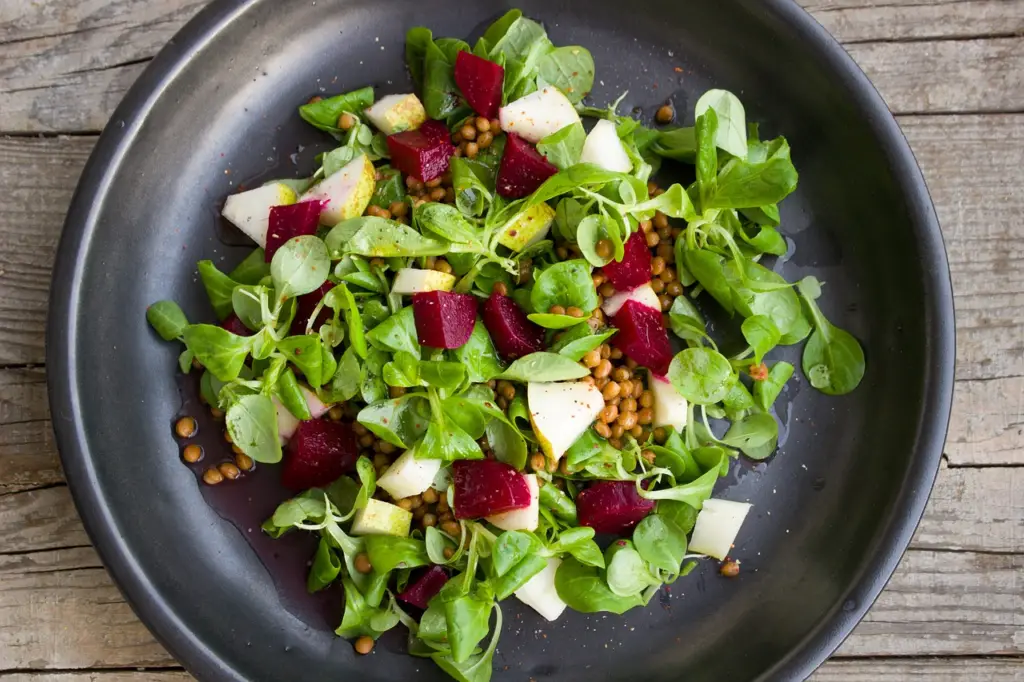Quick Tips for Making the Perfect Salad

When you have a salad at a good restaurant, why is the experience always so satisfying? After all, most of the ingredients are raw and just mixed together. Try as you may, though, you can’t seem to replicate the same salad at home.
Salads are a great source of fiber, protein, and healthy fats. If you make them right, they can be the perfect healthy meal for weight loss, maintenance, and overall body fat loss. So what is it that makes that restaurant salad seem so much better with the perfect crunch? Can we replicate their salad techniques and get a top-notch salad at home?
Is it possible to make a perfect salad at home?
If you’ve been wondering how to make a salad that tastes awesome and fills you up, you’re in the right place! Many people have been in the same boat; they love salads and want to have more of them in their lives.
Of course, some folks may not be too fond of salads but realize their health benefits. They might not even have experienced a really good salad, thinking of them as a bland, boring option.
If this seems familiar, you’re probably searching for a tasty salad recipe. And the cowboy caviar is the perfect option! It’s a delicious and healthy mix of veggies, beans, and corn. Now, let’s explore some quick tips for making the perfect salad.
1. Make a Quality Dressing
Some salad enthusiasts might find it intimidating to whip up a salad dressing on their own. However, this is one of the simplest parts of making a good salad at home. The point below will take you through the basics of making homemade salad dressing:
- Go for fresh ingredients as much as possible; they will give a unique and intense burst of flavor that you won’t find in a bottle or can
- There’s a classic ratio for basic vinaigrette, which can go on almost any salad; this ratio is one part vinegar to three parts oil.
- If you like your salad dressing a little more acidic, make the oil to vinegar parts 2:1.
- Feel free to experiment with various ratios and combinations until you find the perfect one for your taste. However, it’s probably best to stick to a more classic ratio when making the salad for others.
- When you have the vinaigrette ratio down pat, experiment with other ingredients such as honey, mustard, balsamic vinegar, chili flakes, herbs, shallots, etc.
- When seasoning the dressing, taste it at every step; this will let you know when it’s time to stop.
- To enhance the flavor, consider using different types of salt. Many chefs prefer sea salt and combine it with ingredients that are already salty such as soy sauce, anchovy paste, and miso.
2. Season the Greens
Why do the greens in your homemade salad taste bland, unlike the ones in the restaurant salad? The answer may lie in the seasoning.
Yes, there’s already a lot of seasoning to the dressing. The salad greens need their share of seasoning as well. Most chefs add just a little salt and pepper. You’d be surprised at how fresh produce shines with these two simple seasonings!
When you carefully examine the salad at your preferred restaurant, you will notice various types of greens mixed in. The greens mixture enhances the taste, look, and overall eating experience.
Collecting a variety of greens for a homemade salad sounds tiring and time-consuming. Luckily, many of us can access grocery stores that sell mixed greens in packets. If you have the time, go for fresh options and mix everything yourself.
When mixing greens, keep different textures and flavors in mind. Greens like iceberg and romaine lettuce provide a crunchy texture. Arugula and spinach will usually have a stronger flavor but a softer crunch. Green leaf lettuce won’t have much taste, so you can add arugula and watercress for a peppery touch.
Look up some other healthy salad greens to add to your salad. With the never-ending combinations and flavors, you won’t find salads boring anymore.
3. Choose Fresh Herbs
Don’t forget that herbs count when deciding what greens to add to your salad. You may not even have to go to the store to get herbs for your salad; there might be a few leftover leaves in your fridge right now.
It’s also pretty easy to have a little herb garden, even if you live in an apartment. Once you get serious about your salads, you’d realize the importance of fresh herbs. A little parley, cilantro, tarragon, or thyme can take any salad to the next level.
However, it’s best to look up some of the best combinations before you start tossing ingredients together. Here are some tried and tested suggestions for pairing herbs with other salad ingredients:
- Cilantro goes well in a taco salad, shrimp avocado salad, or anything with chili peppers.
- Basil pairs well with tomato, mozzarella, and other mild cheeses.
- Mint enhances the taste of a feta-olive salad; it also goes well with ingredients like citrus, fresh cucumbers, and other herbs such as basil or tarragon.
4. Think Out of the Box
When most people think of salads, they visualize greens, vegetables, and perhaps a few croutons. However, your salad doesn’t have to be entirely green. It can be full of colors, especially when you’re not afraid to experiment.
The next time you try to make a salad at home, try various combinations of colorful vegetables. Sprinkle on some dried fruits or mix in some fresh fruit pieces. Cooked grains like quinoa can make a salad a hearty and filling meal. Alternatively, you can use a piece of whole-grain bread to mop up the salad dressing on the plate.
5. Add Healthy Fats
Upscale restaurants aren’t stingy about adding healthy fats to their salads. These may come in the form of:
- Avocados
- Olive oil
- Avocado oil
- Toasted nuts
- Smoked salmon
- Cheese
- Sunflower seeds
- Ground flaxseeds
- Toasted sesame seeds
- Pumpkin seeds
- Boiled eggs
There’s no need to shun fat as a food group. When you use the right kind of healthy fats, they can make your salads taste great. Plus, you’ll feel fuller for much longer. You can also add other nutritious foods like chickpeas or grilled chicken for more protein.
Conclusion
When making salads, a little research goes a long way. The tips above will hopefully help to make your next salad a delicious experience. Why not check out the agents you have and start assembling a nutritious salad right away? As long as you have a quality dressing and fresh ingredients, your salad will be the talk of the table. Bon appetite!







